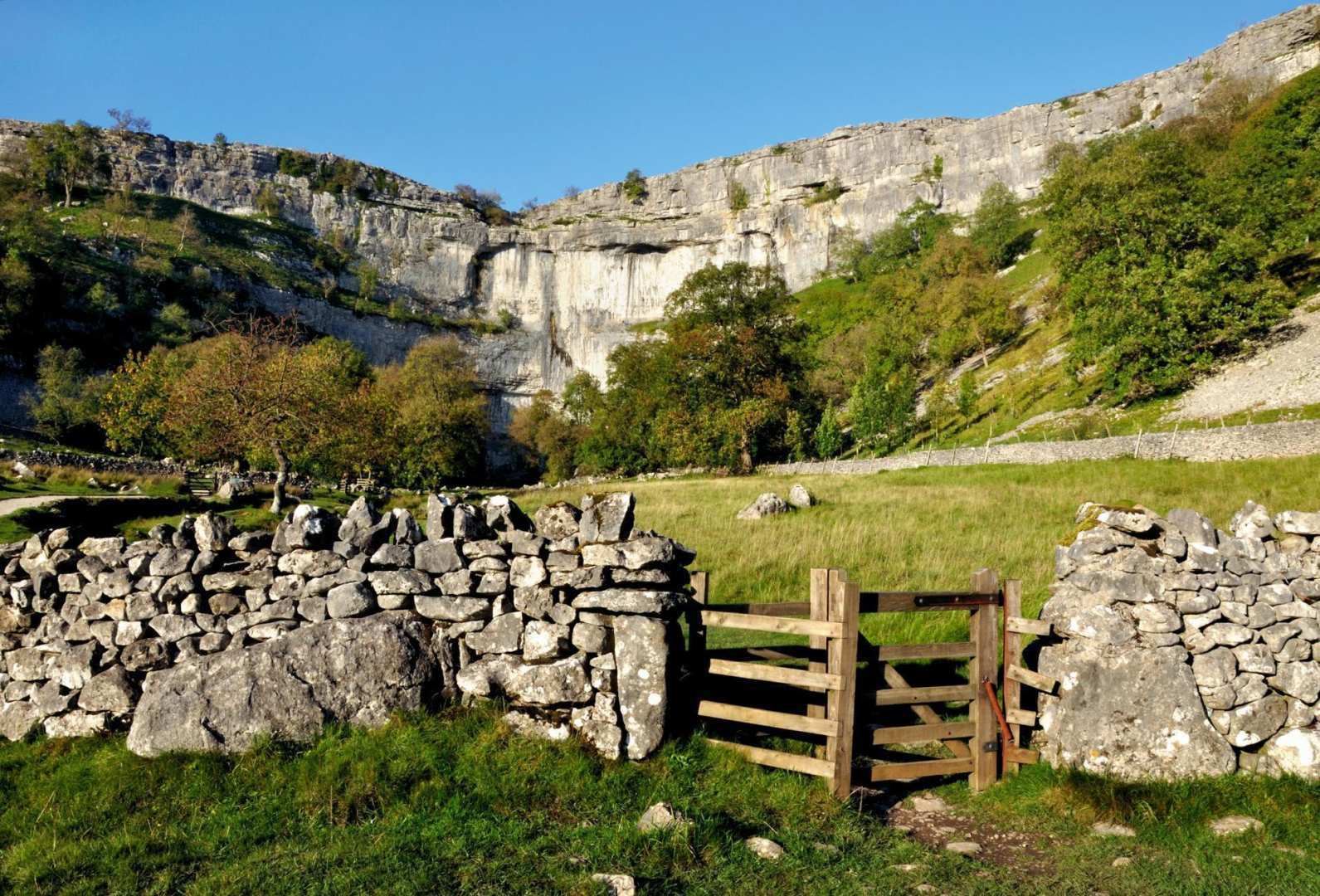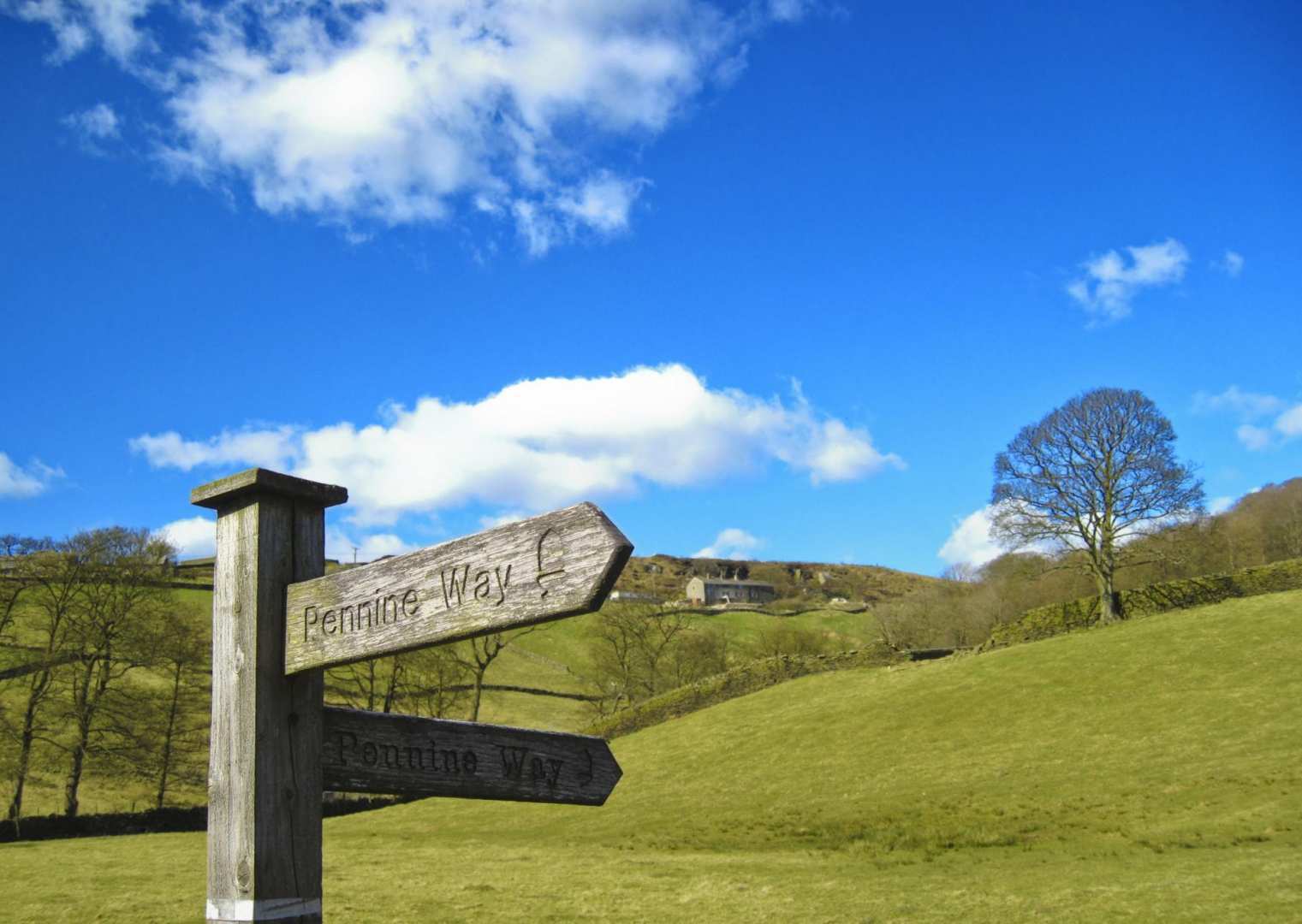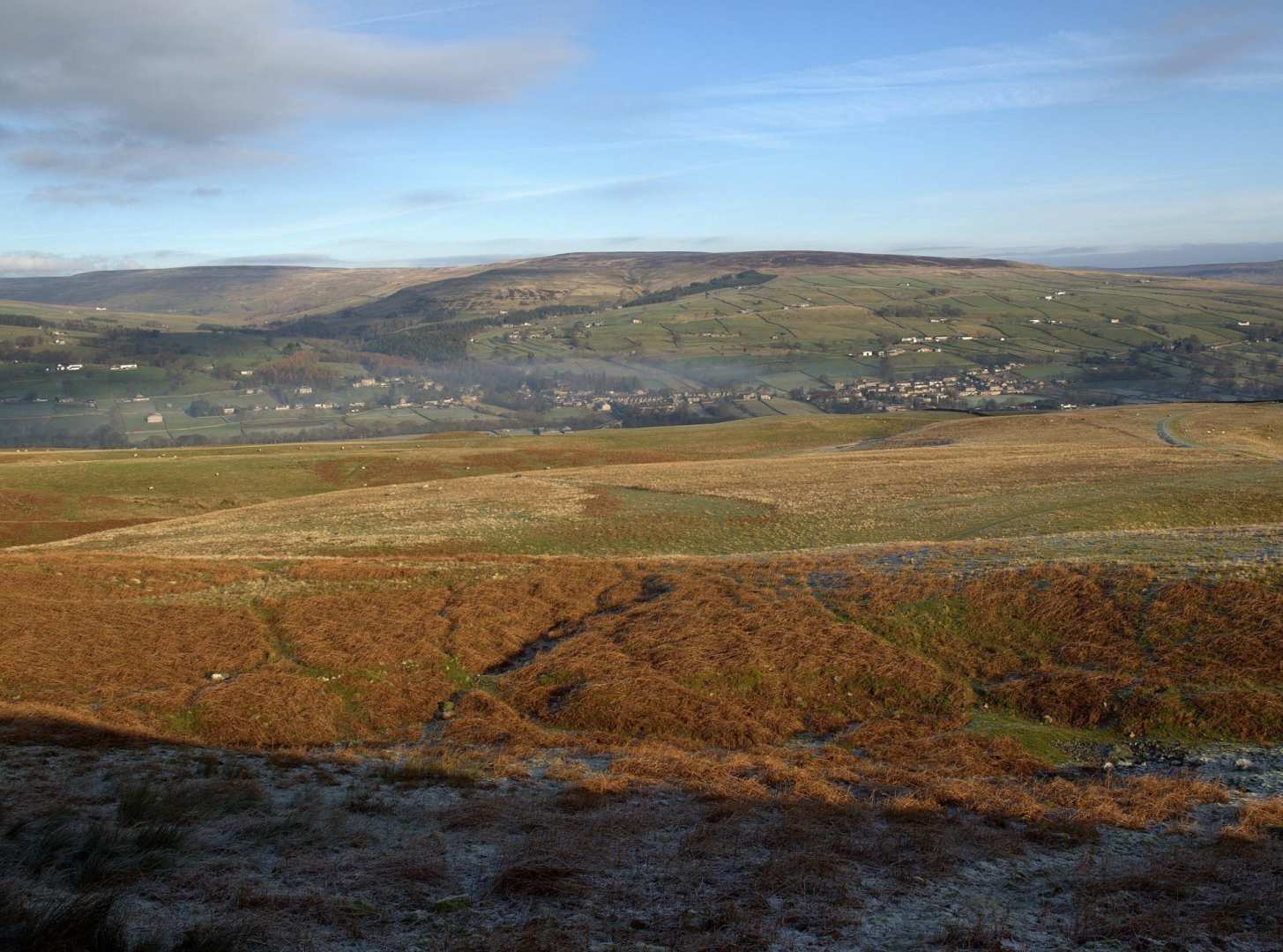The Pennine Way: A National Trail Officer's View
Contours Walking Holidays
The Pennine Way: A National Trail Officer's View
https://www.contours.co.uk/the-pennine-way-a-national-trail-officers-view
Back in 1932, a mass trespass on Kinder Scout by hundreds of ramblers paved the way for the creation of National Parks and by 1965, the first National Trail in the UK had been created – The Pennine Way.
When you start the Pennine Way, with the slopes of Kinder Scout looming over the trail, it is hard to ignore the turbulent history that has made the trail possible. Today, it is seen by many as the epitome of freedom in the countryside, passing along the backbone of England and taking in mile up mile of glorious countryside from the Peak District, the Yorkshire Dales, over Hadrian’s Wall and to the borders of Scotland. It is one of the longest, best-known and most challenging national trails and for this reason, it is also one of the best loved.
And behind every National Trail is someone who knows better than most what makes the trail unique. We joined Steve Westwood, the National Trail Officer for the Pennine Way to find out more.
.jpg) First of all, thank you for taking the time to share your experiences of the Pennine Way. For those who aren’t familiar with National Trails, perhaps you could tell us a bit about what it is to be a National Trail Officer?
First of all, thank you for taking the time to share your experiences of the Pennine Way. For those who aren’t familiar with National Trails, perhaps you could tell us a bit about what it is to be a National Trail Officer?
National Trail Officers basically coordinate the management of a national trail to ensure that it’s well maintained. It’s a very versatile role - we do things like checking that the surfaces and signage is ok and we’re a point of contact for anyone who might be thinking of walking the trail, or who have found problems on the route. We even work with guidebook companies and the Ordnance Survey to make sure that the trail is up to date.
Your job must be extremely varied – what’s your favourite part of working on and for the Pennine Way?
My job entails about 101 different elements, but I must admit, I do love being out on the trail. I’m a very lucky chap because it’s certainly a very beautiful place to be.
How much time do you get to spend on the trail?
It varies a lot, largely because of the weather. Currently I’m carrying out a conditions survey, which takes about 25 days and as you can imagine, is a tad harsh at this time of year. On average, I spend 2-3 days out on the trail every week.
.jpg) You must be extremely familiar with the Pennine Way. How many times do you think that you’ve walked it?
You must be extremely familiar with the Pennine Way. How many times do you think that you’ve walked it?
Walking it from end to end like a normal walker, I’ve walked the Pennine Way a couple of times. Normally though, I’m out on the trail in shorter bursts, but if I added these up, I’d estimate that I’ve walked it around 9 times. I know individuals who have walked it more than 12 times from end to end. It’s an incredibly seasonal experience, so each time is very different.
Do you normally walk alone or with company when you’re on the trail?
As with everything on the Pennine Way, it varies. The trail covers 13 different councils and all of them are responsible for work on the ground, so often I’m walking with someone from the relevant council. I often walk on my own too and if I was brutally honest, my preference would be to go running or walking alone or with my dog.
.jpg) What do you like best about walking alone?
What do you like best about walking alone?
It depends on your personality, but for me, one of the big benefits of walking alone is that you have a long time to think about things. You don’t often get that in modern life.
What kinds of things are you looking for when you’re out on the trail?
Looking after the Pennine Way isn’t all about making it a pleasant walking environment; it’s about monitoring and preserving the route. The main things that we look for are the quality of stiles and gates, but we also look at signage and surface conditions.
Part of the fun of the Pennine Way is that you need to navigate with a map and compass, so while we are checking that signs are in good condition, we’re not trying to cover the whole route with them. I also undertake regular conditions surveys so that we can monitor what’s changing on the trail. Generally, it’s about identifying problem areas and deciding when and how to intervene.
.jpg) It sounds like conservation has a big impact on your role. How far do you get involved with the conservation of the landscape and the wildlife?
It sounds like conservation has a big impact on your role. How far do you get involved with the conservation of the landscape and the wildlife?
Land management teams are responsible for a lot of the work, particularly for Sites of Special Scientific Interest. There are lots of different teams and initiatives, such as with the Moors for the Future program that’s operating in the South Pennines. I tend to work alongside these teams and we coordinate an approach that helps the trail, the surrounding area and is low impact, but has lasting effects.
We know that a new stone flagged footpath has been built on the trail above Rochdale. This will be great for preventing peat erosion and making the trail nicer for walkers. What kind of impact does this sort of work have on the trail?
The stone flags are great, but not just for making it a nice walking environment. Some sections of the trail can get quite boggy, which is natural given the types of moorland terrain that the trail encounters. The problem is that when people walk around these boggy areas, the path widens and damages the peat and moorland. We then have to choose whether to intervene, not to make the surface nicer to walk upon, but to prevent further erosion.
The new footpath stretches over 777 metres and some of the stones weigh almost a tonne- how do you go about starting this sort of work and how do you get the stones to the trail?
 When I do the conditions survey, I identify areas that need work. I then work with the highway agency to find suitable staff to complete it. In this case, stone flags were flown in with helicopters at the end of March last year when it was snowing. It was a really harsh time of year to be doing the work, but helicopters make the job much easier. It would cause tremendous damage to transport the stones any other way.
When I do the conditions survey, I identify areas that need work. I then work with the highway agency to find suitable staff to complete it. In this case, stone flags were flown in with helicopters at the end of March last year when it was snowing. It was a really harsh time of year to be doing the work, but helicopters make the job much easier. It would cause tremendous damage to transport the stones any other way.
In the 1970s, the Pennine Way used to be considered a rite of passage particularly by young men. Is it still looked at in the same way today?
I personally feel that it’s changed quite significantly. Back then, completing the Pennine Way was a really impressive achievement and while it still is, now there are more exotic trips that have taken over. People can travel to Everest Base Camp and while the reality is that some parts of the Pennine Way may be just as difficult, Everest will always sound more challenging. Still, I think for a lot of people the Pennine Way represents a dream. They know that one day they would like to complete the trail, they just haven’t got around to it yet.
The reality is that the image of the Pennine Way is changing day after day. People are coming back around to it as a viable challenge and those people who have dreamt about walking it are finally getting around to starting and completing it. More adventurous ultra-runners are taking up the challenge of completing it as quickly as possible, while people are also taking advantage of walking the trail in shorter sections.
You said that some parts may be as challenging as Everest Base Camp, which bits?
For me, the most difficult thing is getting up each day and being prepared to walk another 15 or so miles again, but if you’re keen on walking, that’s all part of the appeal. Certainly, one of the toughest sections is between Dufton to Garrigill, as this traverses Cross Fell, the highest point on the Pennine Way. Equally, the first day between Edale and Crowden shouldn’t be underestimated – it’s a big climb with some long mileage!
What types of people do you encounter along the trail?
As the Pennine Way is such a long walk, the number of people walking it can be so stretched out that outside of the honeypot areas such as Pen-y-Ghent and Hadrian’s Wall, it’s very quiet and you often don’t see anyone. More people are using baggage carrying services as it makes the whole thing much easier, so it’s really open to anyone with good walking fitness. I see the occasional person walking it as part of a Land’s End to John O’Groats challenge. They’re usually incredibly neatly packed, healthy looking individuals who are walking fit and have had a lot of time to think!
What’s the most unusual thing that you’ve ever encountered on the Pennine Way?
I’ve seen some great things, including a guy who wanted to pull a trolley along the Pennine Way. I’ve even had moments where I’ve looked around and found myself looking at a bunch of soldiers taking part in military exercises.
 Do you have a favourite section and if so, what is it?
Do you have a favourite section and if so, what is it?
It really has to be the section between Middleton-in-Teesdale and Dufton. There’s dramatic scenery all along the trail, but as soon as you reach this section, it’s combined with some wonderful locations such as Low Force, High Force, Cauldron Snout and High Cup Nick. It’s a wild day’s walking and at the right time of year, it’s famous for its flowering meadows and rare alpine plants.
Have you walked any other national trails and if so, how do they compare to the Pennine Way?
I’ve done a lot of walking in the UK and overseas, not least because I’m a member of my local Mountain Rescue team. In terms of other national trails in the UK, I’ve done the Pembrokeshire Coast Path and I used to manage the West Highland Way, so I’m quite familiar with that. Besides national trails, I’ve done a canoe tour along the River Spey, long distance cycling and I’ve also walked a lot overseas, including the GR20 in Corsica, but I’m totally addicted to the Pennine Way.
It’s a strange feeling as I’ve done it for 12/13 years and I feel like it’s become my trail. I do actually care about it. The trail is not as classically beautiful compared to places such as the Lake District, but for me, it’s astonishing. Its wild remoteness, while not wilderness, is breath-taking and has a real magic to it. The landscapes left behind from mining make it hard to envisage the people that have operated there in years gone by. It’s a very strange, but a very addictive landscape.
.jpg) If you could give one piece of advice to someone about to walk the Pennine Way, what would it be?
If you could give one piece of advice to someone about to walk the Pennine Way, what would it be?
The Pennine Way isn’t an easy walk, but it’s a wonderful experience and to get the best out of it, you need to be physically fit and free of injury. It’s worthwhile doing the preparation – practice on some hills and prepare for the challenge. I’ve heard a lot of people’s experiences and for some, walking the Pennine Way has changed their lives completely. The sense of achievement is massive, so it’s worth doing the preparation.
What do you think makes the Pennine Way so special?
My personal view is not one based on the landscape, but on the social history of the trail and what followed in the time after world war two. It’s worth remembering that before that time, it was illegal to walk across the moors, yet now we can enjoy these wild, open spaces at leisure.
I always think of the lyric ‘I walk where I will over mountain and hill’ from ‘The Manchester Rambler’ by Ewan McColl. The song was written about the mass trespass on Kinder Scout and the words do ring true, because the wild places are where people want to be, yet it’s astonishing that we take our right to be outside for granted. The thought that people fought for that freedom is very moving and the Pennine Way sums up this whole sentiment, which is what makes it so special.


